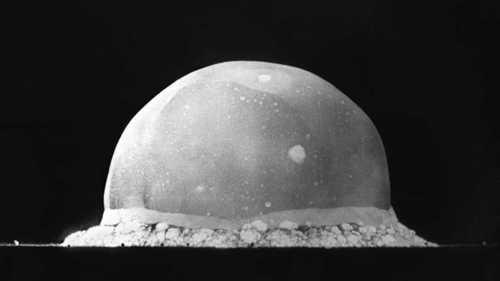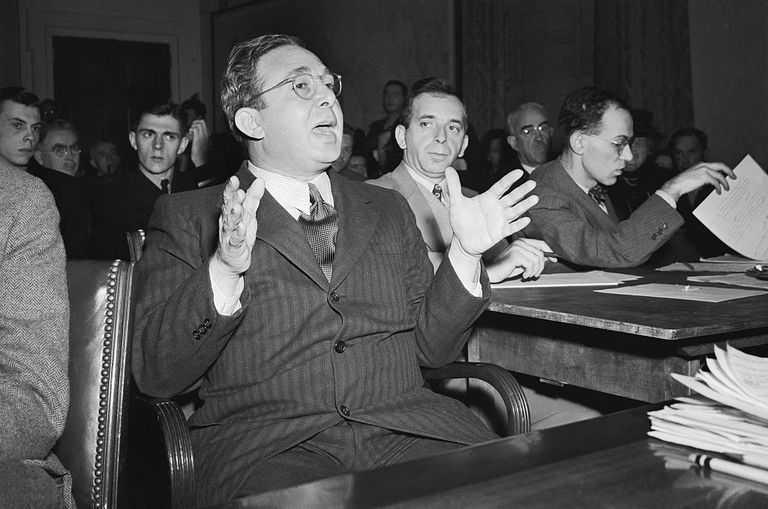Explore the World's Best Ideas
Join today and uncover 100+ curated journeys from 50+ topics. Unlock access to our mobile app with extensive features.
Szilard's eureka moment
Leo Szilard, a Hungarian-born Jew, fled Germany for the UK two months after Adolf Hitler became chancellor.
At the time, James Chadwick just discovered the neutron. Not long after, Cambridge physicists split the atom by bombarding a lithium nucleus with protons. In this, they confirmed Albert Einstein's idea that mass and energy are different forms of the same thing.
In 1933, Szilard thought that if you could find an atom that was split by neutrons, and in the process, release two or more neutrons, then the mass would emit a huge amount of energy.
22
369 reads
Pieces of the puzzle
- Szilard's idea did not gain traction until 1938, when German physicists Otto Hahn and Fritz Strassman (opponents of the German regime) bombarded uranium atoms with neutrons. They found traces of the element barium in the debris.
- Hahn wrote about it to Austrian chemist Lise Meitner, who explained that the uranium nucleus was splitting into two equal parts - a process named "fission."
- In New York, Italian physicist Enrico Fermi found that uranium fission released secondary neutrons needed to start the chain reaction.
23
135 reads
Insight about the atom bomb
After the discovery of Fermin, Szilard joined him in New York. Together they figured that a kilogram of uranium would make energy similar to 20,000 tonnes of TNT. However, Szilard knew that this discovery could be disastrous and feared that the Nazis would soon figure this out too.
In 1940, two German physicists working in the UK worked out how to produce uranium-235 in high quantities, how it could be used to make a bomb, and the disastrous consequences if they succeeded.
21
99 reads
The bomb projects
In March 1940, German physicists Rudolf Peierls and Otto Frisch wrote to the British government in their Memorandum on the Properties of a Radioactive 'Super-Bomb', urging them to take action. It led to the British bomb project, codenamed Tube Alloys.
The US government appointed physicist Arthur Compton to lead a nuclear weapons programme, eventually named the Manhattan Project. Over the next four years, the US, UK and Canada poured resources into the Manhattan Project. Tube Alloys was eventually joined with the US project.
21
85 reads
A black day in the history of mankind
In 1942, a pile of uranium and graphite was assembled in a squash court underneath a stand on a football field in Chicago. Then, on 2 December 1942, the first man-made nuclear chain reaction was created. Once confirmed, Szilard shook hands with Fermi and said, “This will go down as a black day in the history of mankind.”
On 16 July 1945, the US detonated the world’s first nuclear bomb in the New Mexico desert. The test proved that nuclear energy could be weaponised.
24
109 reads
IDEAS CURATED BY
Charlotte Wood's ideas are part of this journey:
Learn more about history with this collection
The historical significance of urban centers
The impact of cultural and technological advances
The role of urban centers in shaping society
Related collections
Similar ideas
5 ideas
9 ideas
2 ideas
Read & Learn
20x Faster
without
deepstash
with
deepstash
with
deepstash
Personalized microlearning
—
100+ Learning Journeys
—
Access to 200,000+ ideas
—
Access to the mobile app
—
Unlimited idea saving
—
—
Unlimited history
—
—
Unlimited listening to ideas
—
—
Downloading & offline access
—
—
Supercharge your mind with one idea per day
Enter your email and spend 1 minute every day to learn something new.
I agree to receive email updates

